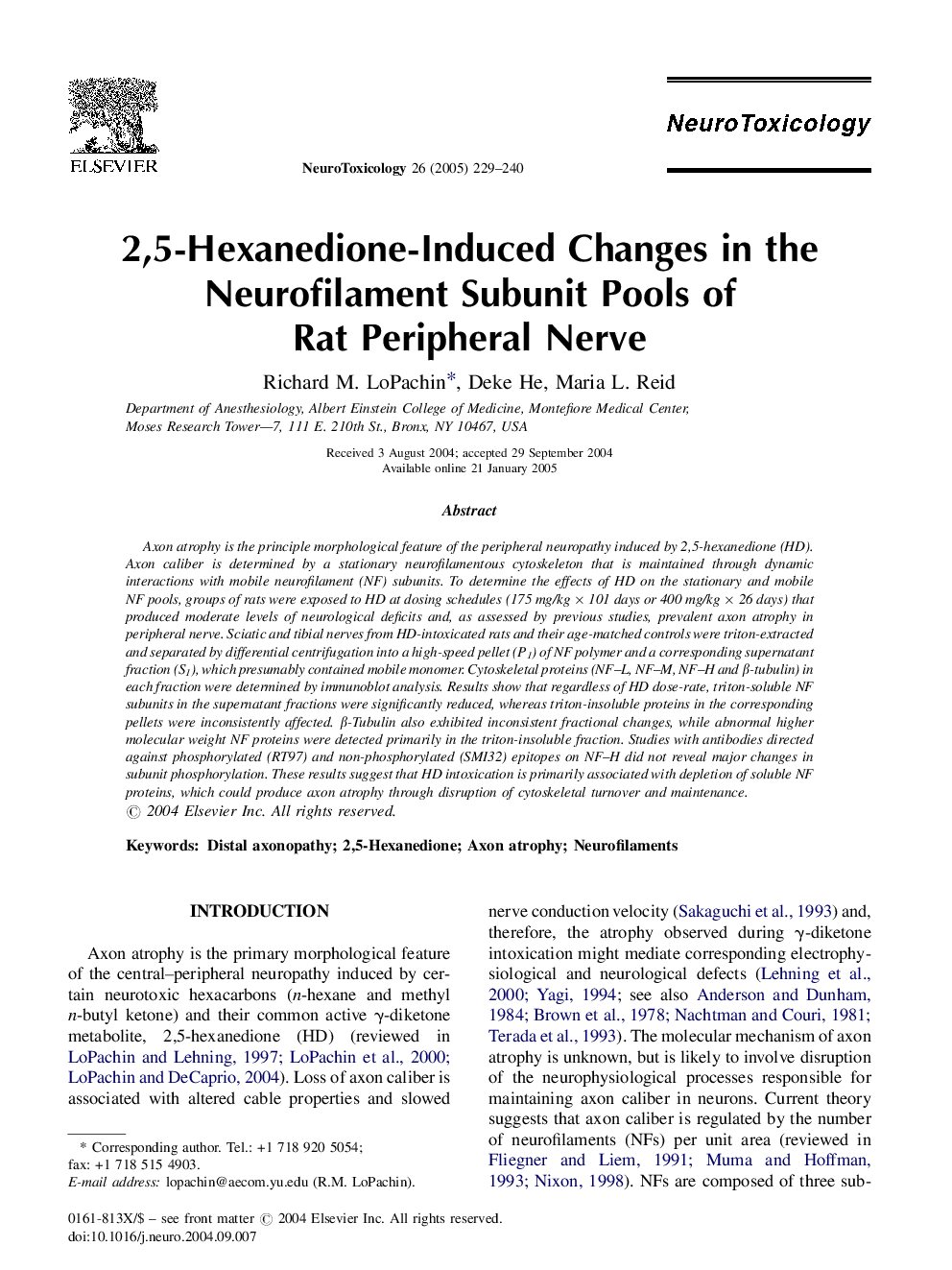| Article ID | Journal | Published Year | Pages | File Type |
|---|---|---|---|---|
| 9032367 | NeuroToxicology | 2005 | 12 Pages |
Abstract
Axon atrophy is the principle morphological feature of the peripheral neuropathy induced by 2,5-hexanedione (HD). Axon caliber is determined by a stationary neurofilamentous cytoskeleton that is maintained through dynamic interactions with mobile neurofilament (NF) subunits. To determine the effects of HD on the stationary and mobile NF pools, groups of rats were exposed to HD at dosing schedules (175 mg/kg Ã 101 days or 400 mg/kg Ã 26 days) that produced moderate levels of neurological deficits and, as assessed by previous studies, prevalent axon atrophy in peripheral nerve. Sciatic and tibial nerves from HD-intoxicated rats and their age-matched controls were triton-extracted and separated by differential centrifugation into a high-speed pellet (P1) of NF polymer and a corresponding supernatant fraction (S1), which presumably contained mobile monomer. Cytoskeletal proteins (NF-L, NF-M, NF-H and β-tubulin) in each fraction were determined by immunoblot analysis. Results show that regardless of HD dose-rate, triton-soluble NF subunits in the supernatant fractions were significantly reduced, whereas triton-insoluble proteins in the corresponding pellets were inconsistently affected. β-Tubulin also exhibited inconsistent fractional changes, while abnormal higher molecular weight NF proteins were detected primarily in the triton-insoluble fraction. Studies with antibodies directed against phosphorylated (RT97) and non-phosphorylated (SMI32) epitopes on NF-H did not reveal major changes in subunit phosphorylation. These results suggest that HD intoxication is primarily associated with depletion of soluble NF proteins, which could produce axon atrophy through disruption of cytoskeletal turnover and maintenance.
Related Topics
Life Sciences
Environmental Science
Health, Toxicology and Mutagenesis
Authors
Richard M. LoPachin, Deke He, Maria L. Reid,
